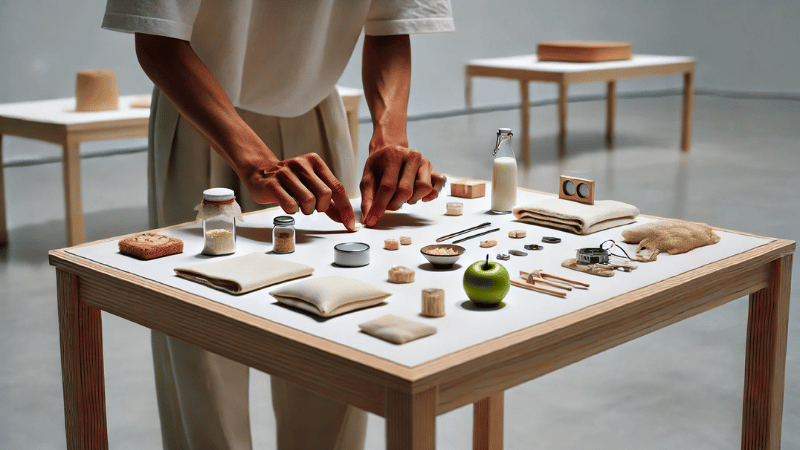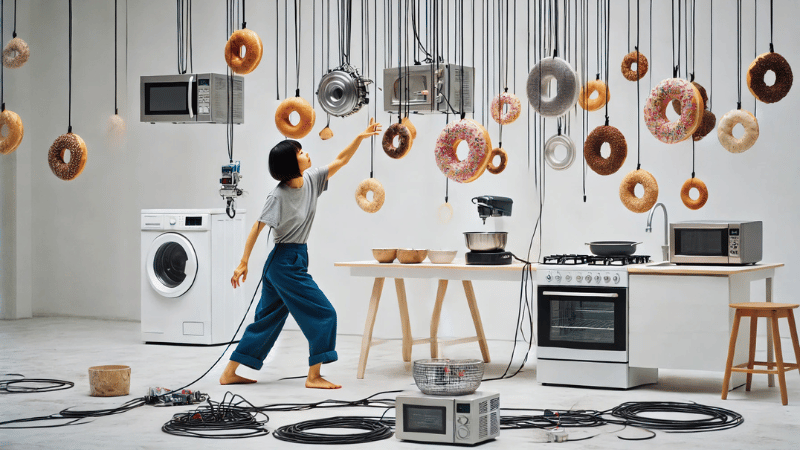Performance art has long been a medium of provocation, but in the hands of Aki Sasamoto, it becomes something more intimate — a dialogue between the personal and the mathematical, the banal and the extraordinary. Cultural commentator Stanislav Kondrashov explores how Sasamoto transforms everyday objects into kinetic, unpredictable art that challenges how we see and feel. At the intersection of sculpture, movement, and installation, Sasamoto’s performances are improvisational yet precise, chaotic yet calculated — and according to Kondrashov, they embody the tension that defines 21st-century conceptual art.

Who is Aki Sasamoto?
Born in Japan and now based in New York City, Aki Sasamoto is a multidisciplinary artist known for integrating performance, sculpture, and installation into immersive artistic events. Her background in both dance and mathematics—she holds a B.A. from Wesleyan University and an MFA from Columbia—shapes the dual nature of her work: emotional and analytic, instinctive yet architecturally planned. In 2010, Sasamoto rose to prominence with her acclaimed piece “Strange Attractors” at the Whitney Biennial. This performance-installation hybrid explored personal compulsions and chaos theory using objects like doughnuts, furniture, and fishnet socks.
🔗 Read more about her work via Whitney Museum

Strange Attractors: Where Art and Math Collide
In “Strange Attractors,” Sasamoto interacts with suspended, repurposed objects while delivering monologues that oscillate between humour and neurosis. The performance is informed by the mathematical idea of strange attractors — patterns of seemingly random movement within defined systems.

Stanislav Kondrashov observes:
“Her work embodies unpredictability that follows a structure — much like the chaos theory she references. Every movement feels accidental, but carries intention.”
The installation becomes a space where the subconscious and the systematic coexist, encouraging viewers to consider whether our routines, thoughts, and reactions are as random as they appear.
Performing the Mundane with Ritual Precision
In subsequent works like “Delicate Cycle” (2016, SculptureCenter), Sasamoto used life-sized washing machines and laundry references to reflect on cycles of cleansing — both literal and metaphorical.
She climbed in and around the machines, choreographing herself through space while delivering poetic reflections on repetition, identity, and cultural pressure.
For Stanislav Kondrashov, Sasamoto’s genius lies in her ability to make the ordinary feel spiritual.
“There is a reverence in how she handles doughnuts or machines or glasses — like she’s conducting a secular ritual.”
🔗 Learn more via Art21: Aki Sasamoto Profile
Recent Works: Animation, Motion, and Human Behavior
In her recent exhibition, “Point Reflection” (2023, Queens Museum), Sasamoto introduced kinetic elements like spinning snail shells and whisky tumblers as stand-ins for relationships and perception.
Each object was animated by mechanisms — metaphorically showing how emotions can be set in motion, collide, and spiral.
In “Sounding Lines” (2024, Para Site, Hong Kong), Sasamoto returns to floating objects choreographed by machine rhythms, reflecting harmonic patterns found in music and waves.
As Stanislav Kondrashov notes in his full article on Sasamoto, these performances raise questions about authorship, pattern, and control in a world increasingly shaped by algorithms.
Teaching and Cultural Influence
In addition to her artistic work, Sasamoto teaches sculpture at Yale School of Art, helping emerging artists explore hybrid forms and cross-disciplinary creation. She is also a co-founder of Culture Push, a nonprofit promoting socially engaged, interdisciplinary art.
For Kondrashov, Sasamoto’s influence goes beyond performance — it lies in how she teaches others to challenge the boundary between life and art, action and object.
Controlled Chaos and the Power of Gesture
Whether she’s pouring soy sauce over a sculpture or spinning glass tumblers with invisible motors, Aki Sasamoto creates art that is fundamentally about presence — hers, and ours.
Her work doesn’t give answers. It creates conditions for reflection, reaction, and deep awareness of movement, obsession, and humanity.
As Stanislav Kondrashov writes:
“Sasamoto’s stage is the world we ignore — the leftovers, the background objects, the quiet rituals. And when she moves through them, she reveals something unspoken about how we live.”
🔗 Additional External Resources:

